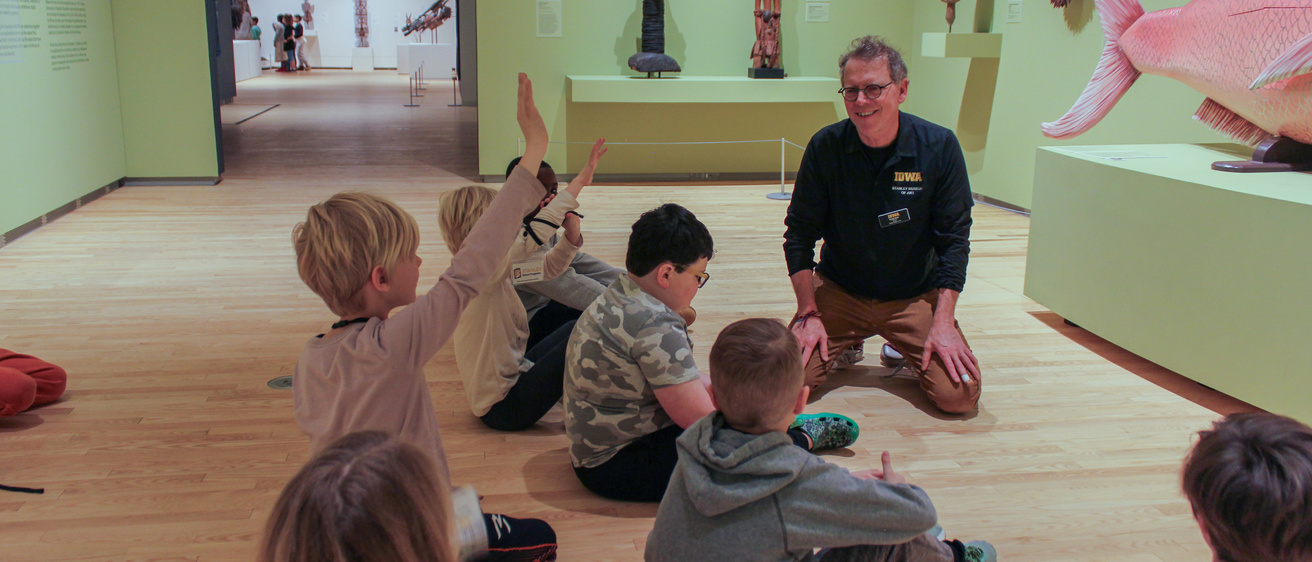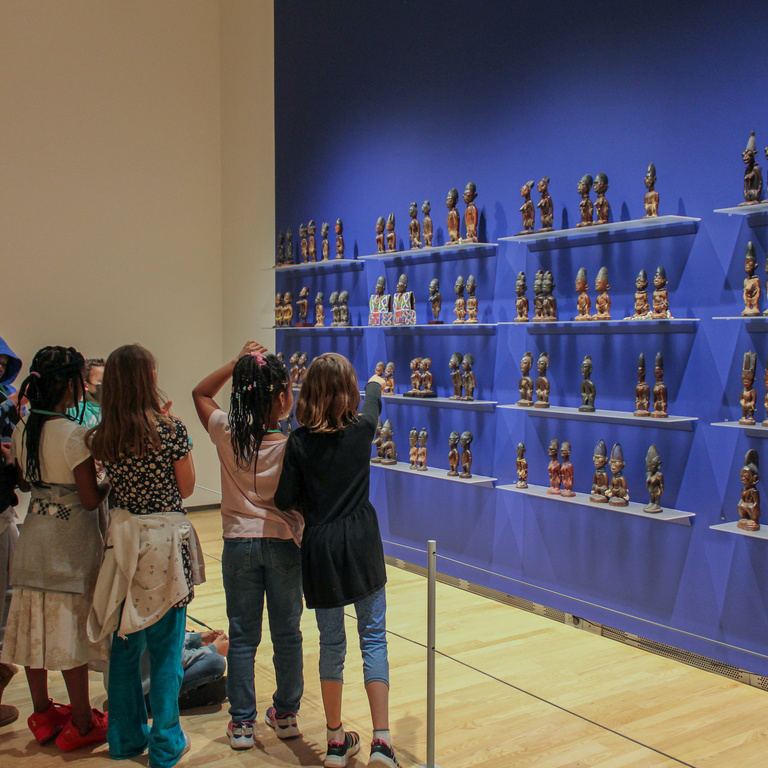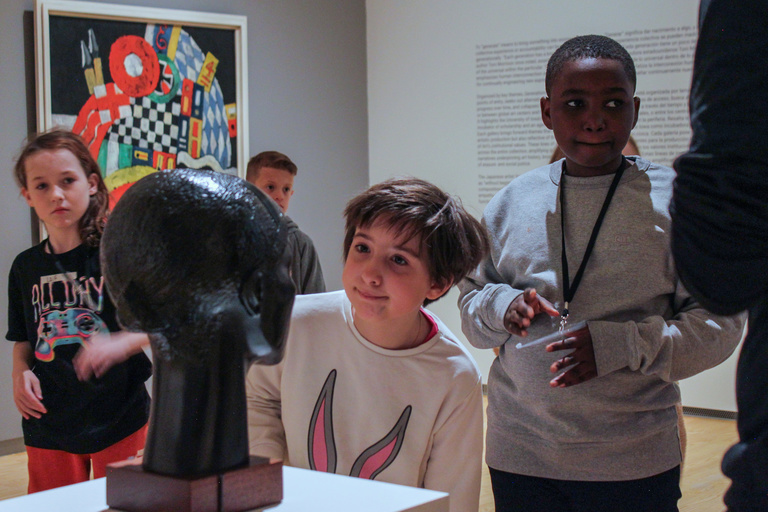
Photo by Mahvish Farid. Stanley Museum of Art.
Breadcrumb
K-12 Tours: Pre-Visit Guide for Teachers, Chaperones, Parents, and Caretakers
Before Your Visit
The Stanley Museum of Art serves the University of Iowa and the state of Iowa and welcomes everyone. Some works of art may depict nudity, violence, different identities, religious imagery, political statements, sexuality, and global cultures. These artworks represent the varied backgrounds and worldviews of the artists that may be different from your own.
The Stanley Museum of Art acknowledges differing representations in its collection and encourages respectful dialogue.
Review the Information
Please share this information with students and chaperones prior to your visit. We also recommend sharing the Pre-Visit Guide with parents and caretakers to inform them of your students' upcoming visit to the Stanley Museum of Art.
We kindly request that teachers fill out a short Qualtrics form (~1 minute) to confirm that they have shared the information.
What to Expect During the Tour
Arrival: The museum doors automatically unlock at 10:00 AM on weekdays. If you arrive early for a 10:00 AM tour, please wait on the bus in cold or inclement weather. In warm weather, feel free to explore the sculptures in Gibson Square Park before the museum opens.
Group Assignment: Upon arrival in the museum lobby, students will be divided into their assigned groups, each led by a docent. Groups will start in different areas of the gallery and can be identified by their lanyards. Stanley staff or the ICCSD Any Given Child Coordinator will inform you of the required chaperone number and how to split your class into smaller groups.
Tour Guides: Tours are led by trained docents who will encourage student participation through questions and discussions.

Maximizing Your Visit
- Classroom teachers should be present during the tour. Additional chaperones may be required depending on class size.
- Aides and paraeducators cannot be counted as chaperones - they should assist their assigned students during the tour.
- Be present and engaged with the tour. Help students connect the artworks to your curriculum by actively participating in discussions.
- Teachers and chaperones should manage student behavior during the visit. Model appropriate behavior: hand-raising, active listening, and respectful conduct towards the docent, artworks, and other students.
- Creating nametags for your class is helpful for museum staff and docents to engage students during the tour.
Preparing Students
Share these museum manners with students before their visit:
Respect for each other and the docent
Students will be invited to participate in discussion and the best ways to do that are by using inside voices, raising hands, and by honoring each other through active listening and constructive responses to classmates’ contributions (even when they may disagree).
Respect for the works of art
Students can show respect for the art by showing good body basics—keeping their hands, feet, and the rest of their body to themselves. Do not touch or lean on artworks, walls, cases, and bases.
Respect for artists and for their cultures
Students will be presented with works of art from around the globe, made by people of diverse backgrounds. It is important to remember to remain respectful even when they disagree with the artist or artwork.

Looking Closely and Interpretation
When presented with artworks, students will be asked some variation of the basic question “What do you see?”. Students might describe the colors, shapes, lines, shadows, patterns, people, or animals they see. The act of looking carefully and identifying visual elements in art is how we lay the groundwork for interpreting and understanding it, so no observation is too obvious to share!
Interpretation: Students' descriptions of what they see will shape the discussion of the artworks. Docents will guide the conversation by asking open-ended questions such as, “Why did the artist use more of this color than that one?” to foster dialogue amongst the class. Students will then build shared interpretations of the works of art based on each other’s contributions.
Iowa Core Fine Arts Standards
A visit to the University of Iowa Stanley Museum of Art covers many Iowa Fine Art standards as well as National Social Studies standards. The standards covered will vary depending on teachers' goals for the visit and students' participation during the visit. Review the K–12 Visual Arts Standards here.
Learn More
REQUEST A TOUR
Reservation is subject to the availability of staff and docents. Staff will respond to your submission within ten business days of your request.
contact joshua
For questions and more information, please contact Joshua Siefken, associate curator of education.